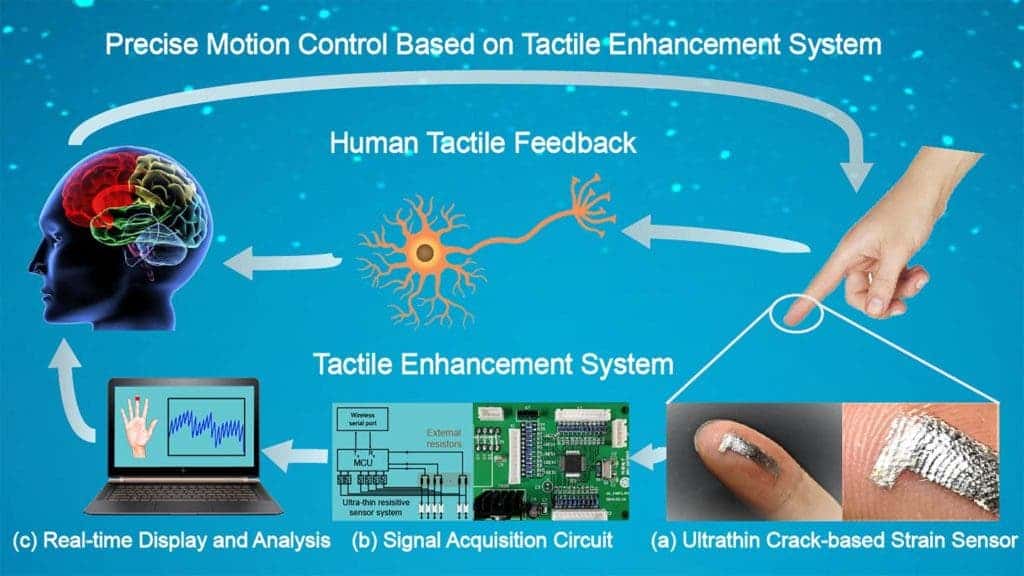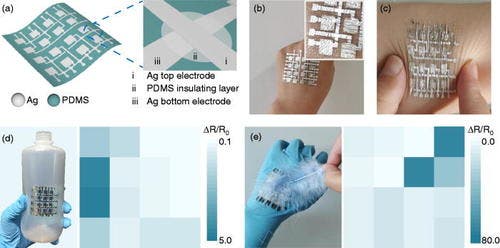
Humans are blessed with an incredibly tuned sense of touch, allowing us to manipulate objects with ease.
There are situations, however, when this sensitivity is impaired such as following an injury or while wearing gloves. This can turn out to be quite a problem for surgeons who often complain that they are unable to manipulate soft tissues with their gloves on as well as they’d like to. In space, astronauts have it much worse due to their cumbersome spacesuits that make maintenance extremely challenging during spacewalks on the International Space Station.
This is where newly reported advanced tactile sensors developed by researchers in China might come in.
The sensor is so sensitive it allows the wearer to detect the light brush of a feather, the touch of a flower petal, water droplets falling on a finger and even a wire too small to be seen.
The piezoresistive, crack-based sensor developed by researchers at the Chinese Academy of Sciences was inspired by a species of spider whose legs are equipped to sensing organs. The spider’s legs have a pattern of cracks, or slits, that allow the arachnid to detect even the faintest movements in its vicinity.
Similarly, the new ultrathin crack-based strain sensor, or UCSS, uses cracks formed in several thin layers of flexible polymer film coated with silver. The cracks in the silver coating generate parallel channels that conduct electricity and enabled the sensor to become highly sensitive to movement.
Trials performed by the researchers showed that thinner layers yielded sensors with higher sensitivity while thicker ones enabled a larger sensing range. After several tweaks, the researchers found a sweet spot with UCSSs made of 15-micron thick polymer layers and 37-nanometer thick silver coatings.
The capabilities of the UCSSs were incorporated into a visually aided tactile enhancement system, or VATES, by connecting them to a signal acquisition unit and visual readout device. This system is essentially an electronic skin that can relay tactile information.

When the sensors were attached to gloves, either on the fingertips or on the back of the hand, they were able to detect tiny movements as a person moved the tip of their finger across various delicate surfaces. Tests also showed that the UCSSs were sensitive enough to detect subtle facial movements like smiling, frowning, and blinking.
Writing in the journal Applied Physics Review, the authors envision a variety of applications such as highly sensitive electronic whiskers, which can be used to map wind flow patterns, wearable sensors for heartbeat and pulse detection, or sensors on prosthetics to enhance the sense of touch.
“These results demonstrate the wide applications of our ultrathin strain sensor in e-skin and human-machine interfaces,” said co-author Caofeng Pan of the Beijing Institute of Nanoenergy and Nanosystems at the Chinese Academy of Sciences.


